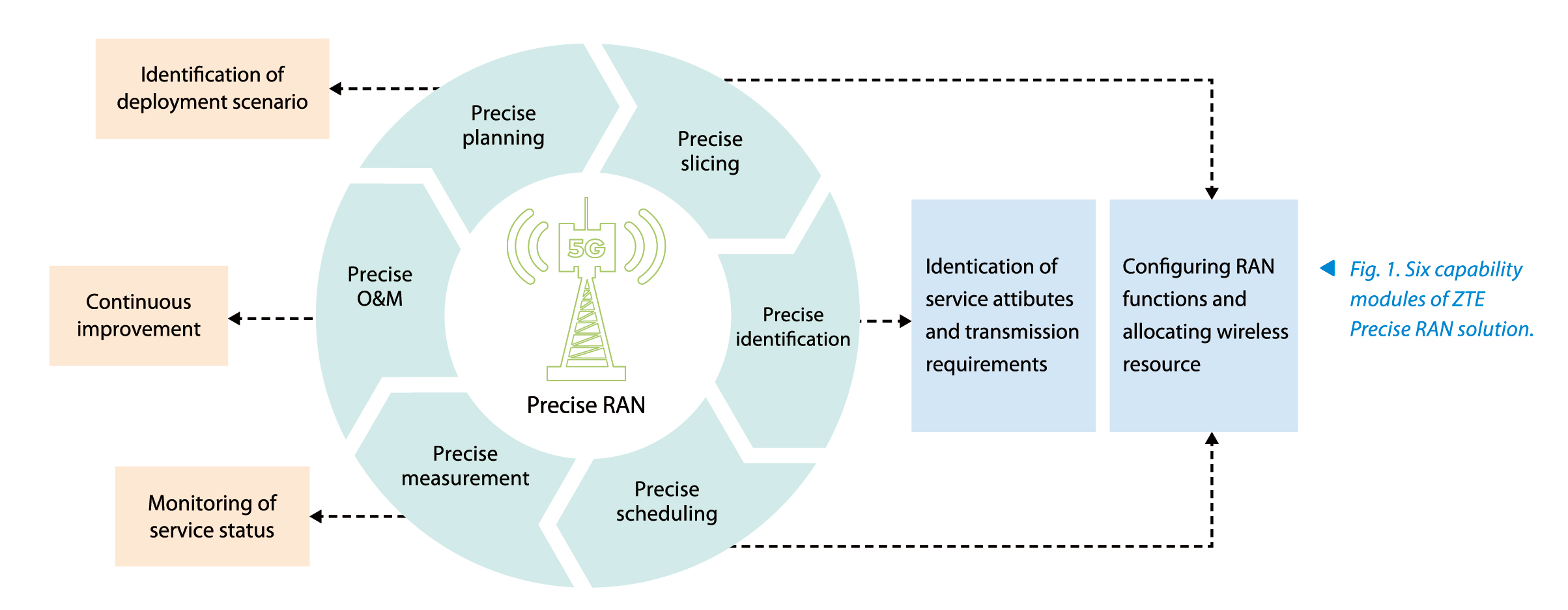At present, a new round of technological revolution and industrial transformation are emerging around the world. New-generation digital technologies represented by 5G, big data, cloud computing, and AI are changing rapidly, and the digital and intelligent transformation of traditional industries is an inevitable trend. As the core engine of new infrastructure construction, 5G has huge potential in supporting this transformation of social economy.
Vertical industries vary widely, and so are their requirements for communication networks. There exist huge differences between ToB and the traditional ToC fields in terms of latency, reliability, rate and self-service capability. The general ToC network basically adopts the best-effort service strategy for end users, and more attention is paid to network-level KPIs. In vertical industry applications, each terminal has rigid requirements for latency, reliability and bandwidth, and requires user-level performance guarantee. The performance guarantee results of each business should also be presented to the end users. To cope with the challenges from vertical industries, ZTE has proposed its Precise RAN solution. Its core idea is to properly apply the radio network functions, allocate radio resources reasonably, and to match service requirements accurately. While ensuring high service quality, it also maintains a high efficiency of radio resource utilization. In this way, ZTE Precise RAN solution enables 5G private network to have the necessary commercial competitiveness.
ZTE Precise RAN solution includes precise planning, precise slicing, precise identification, precise scheduling, precise measurement, and precise O&M, as illustrate in Fig. 1.

Precise Planning
The first step in private network construction is to determine the network architecture. The isolation, deployment costs, deployment time, and O&M modes should be fully considered in the selection of the architecture. According to resource sharing scheme, industry private networks can be divided into three modes: wide-area virtual private network, regional virtual private network, and physical private network. Generally, the wide-area virtual private network is applicable to wide area service scenarios, such as smart grid, smart city, smart scenic spots, new media, and internet of vehicles (IoV). The regional private network is applicable to local parks, such as industrial manufacturing, transportation, logistics, port terminals, high-end scenic spots, and urban security. The physical private network is applicable to closed local areas, such as mines, oil fields, nuclear power stations, and high-precision manufacturing parks.
As to the wireless network planning, vertical industry differs from traditional ToC scenarios in three aspects:
—Performance from area to spots: The traditional eMBB network planning focuses on overall network performance, while the industry-specific precision planning focuses on the performance of a single terminal at a specified location.
—Requirements model from one dimension to three dimensions: The traditional eMBB network planning is based on the assumed service bandwidth, while the industry-specific precision planning is based on the definite three-dimensional service requirements including bandwidth, latency and reliability.
—Scenario from assumption to clarification: Radio coverage of traditional ToC network is classified by statistics of building height and density, while the radio environment of the industry application is clear and complex, and feature analysis is based on specific scenarios.
Precise Slicing
Network slicing logically divides operator networks, isolates resources from services, and thus virtualizes a physical network into multiple logical sliced networks. Different levels of service data can be transmitted on different network slices to meet differentiated requirements for data rates, security, and reliability. The slices can be precisely matched with services through the accurate estimation, allocation and management of slicing resources based on the number of users, DRB and PRB.
Precise Identification
In industrial application scenarios, there are many different service types with different requirements. Based on ZTE’s innovative NodeEngine solution, 5G RAN can identify each service flow and accurately understand service attributes, and thus match applicable wireless resource scheduling functions and set appropriate parameters to meet expected results.
Precise Scheduling
Due to security and efficiency of production operations, some service in industrial application are highly sensitive to latency and reliability of data transmission. Therefore, wireless network needs to enhance its scheduling capability after precise identification, such as with dynamic conservative scheduling, with pre-scheduling enhancement, with latency-based scheduling, and flexible orchestration based on wireless environment and execution results, to guarantee low latency and high reliability in data transmission.
Precise Measurement
Industry customers pay more attention to service experience. Precise measurement refines the granularity of performance statistics to each service flow, provide a more elaborate presentation of bandwidth and latency, and implements a closed loop control from service identification, scheduling to measurement, so that industry customers can better monitor service status.
Precise O&M
Precision O&M is enhanced to meet various ToB requirements. With the introduction of self-service portal, precise O&M provides a visual, configurable, manageable network presentation to both operators and industrial customers, greatly improving the efficiency of ToB network O&M.
With the joint efforts of partners, ZTE Precise RAN solution has been applied in many fields such as power, factories, ports, mining, and rail transit. In the power industry, ZTE has collaborated with the Southern Power Grid and China Mobile to set up the world’s largest and most comprehensive 5G+ smart grid application demonstration zone in the Nansha region of Guangzhou. In the intelligent industry, ZTE and China Telecom have collaborated to build a 5G virtual private network in the Binjiang 5G manufacturing base of ZTE Nanjing, to practice the concept of "Manufacturing 5G by 5G." In the port industry, ZTE has worked with China Unicom and Tianjin Port to achieve unmanned trucks and remote shore bridge control. More application cases will be explored in the future.
The development of 5G has entered a key stage of integration and innovation, and the trend of multi-party collaboration among telecom infrastructure providers, equipment manufacturer, and vertical industries is taking shape. As the road builder of digital economy, ZTE will continue to work hard to create value for vertical industries with its 5G Precise RAN solution.